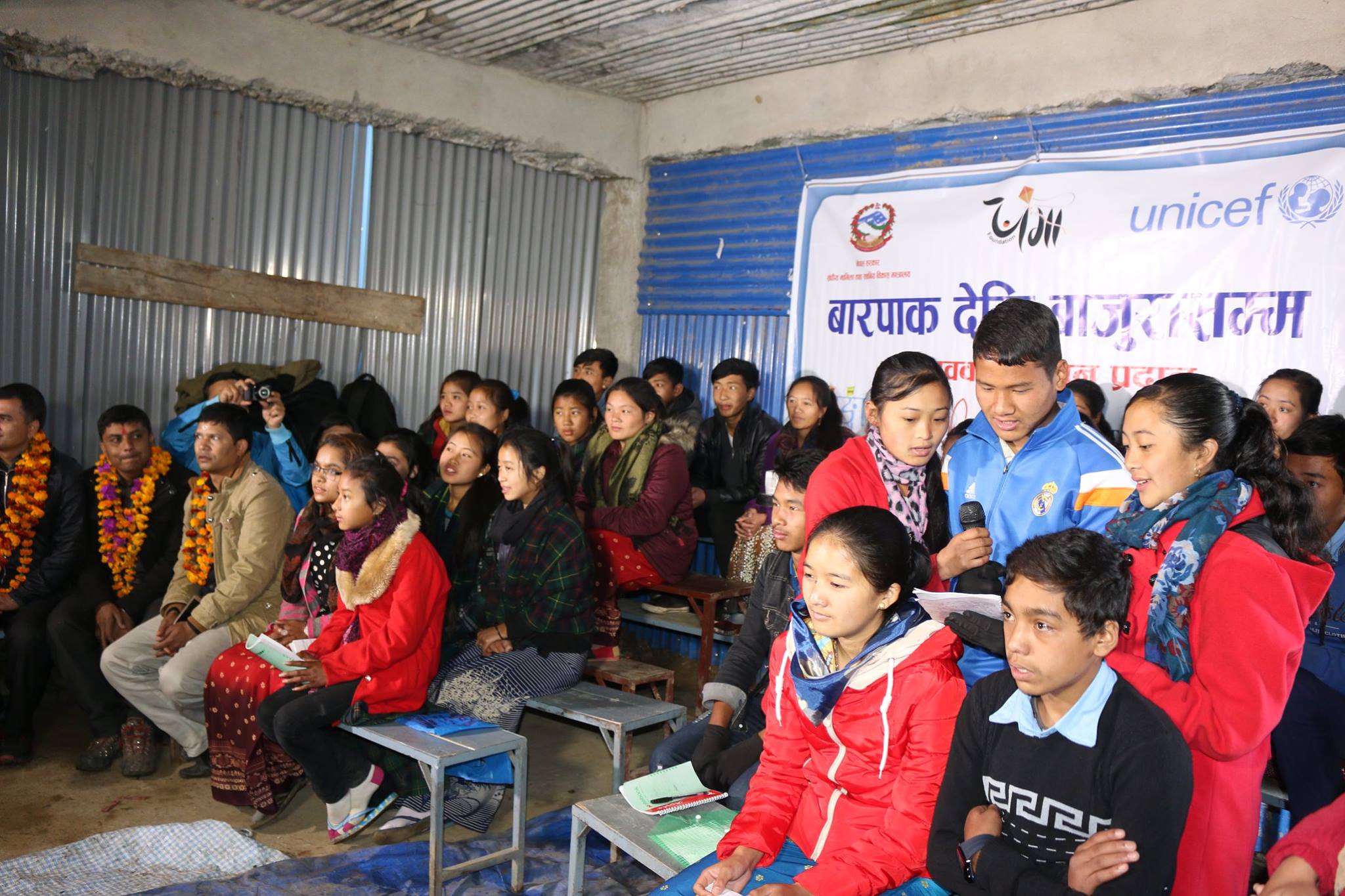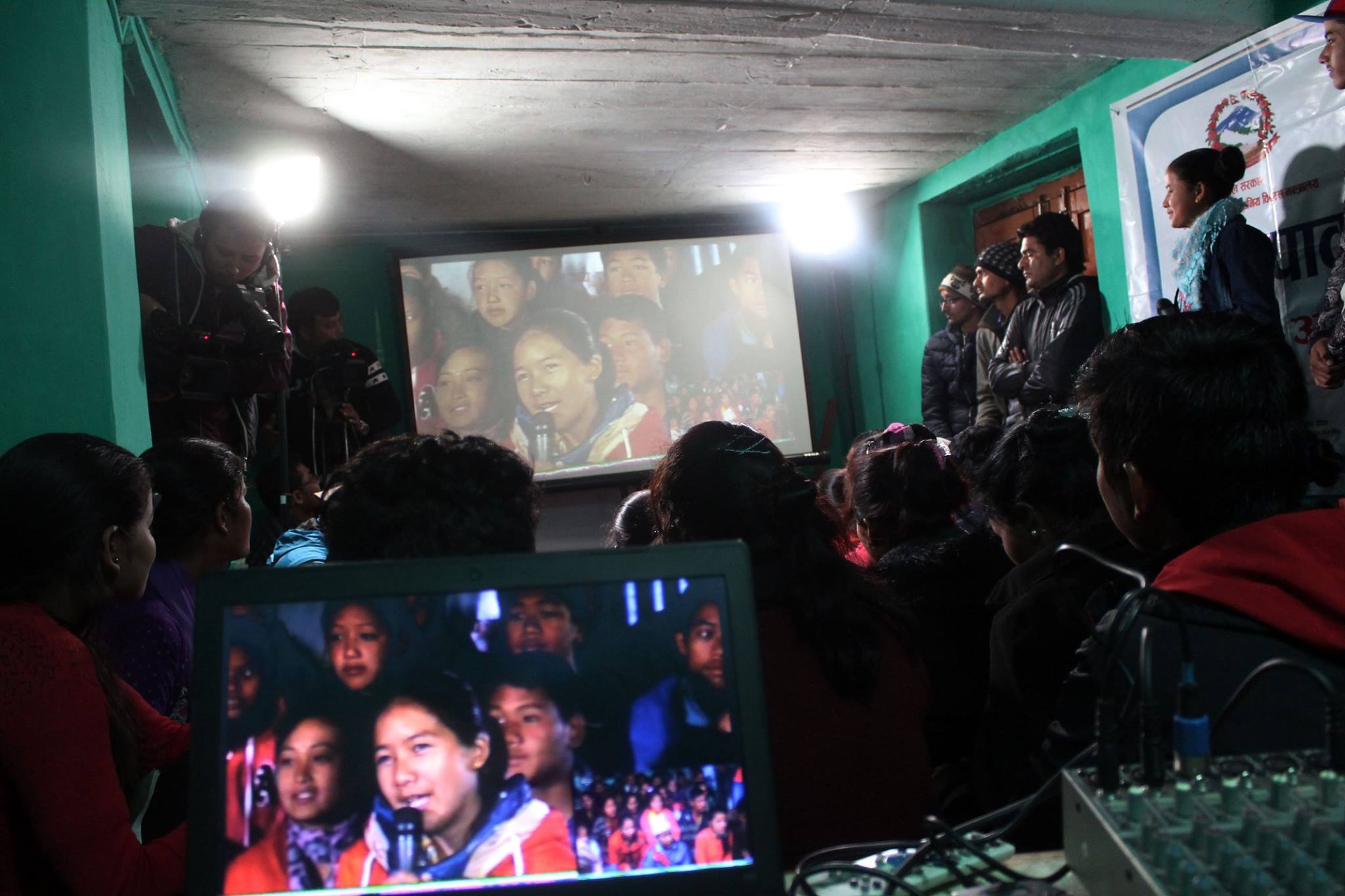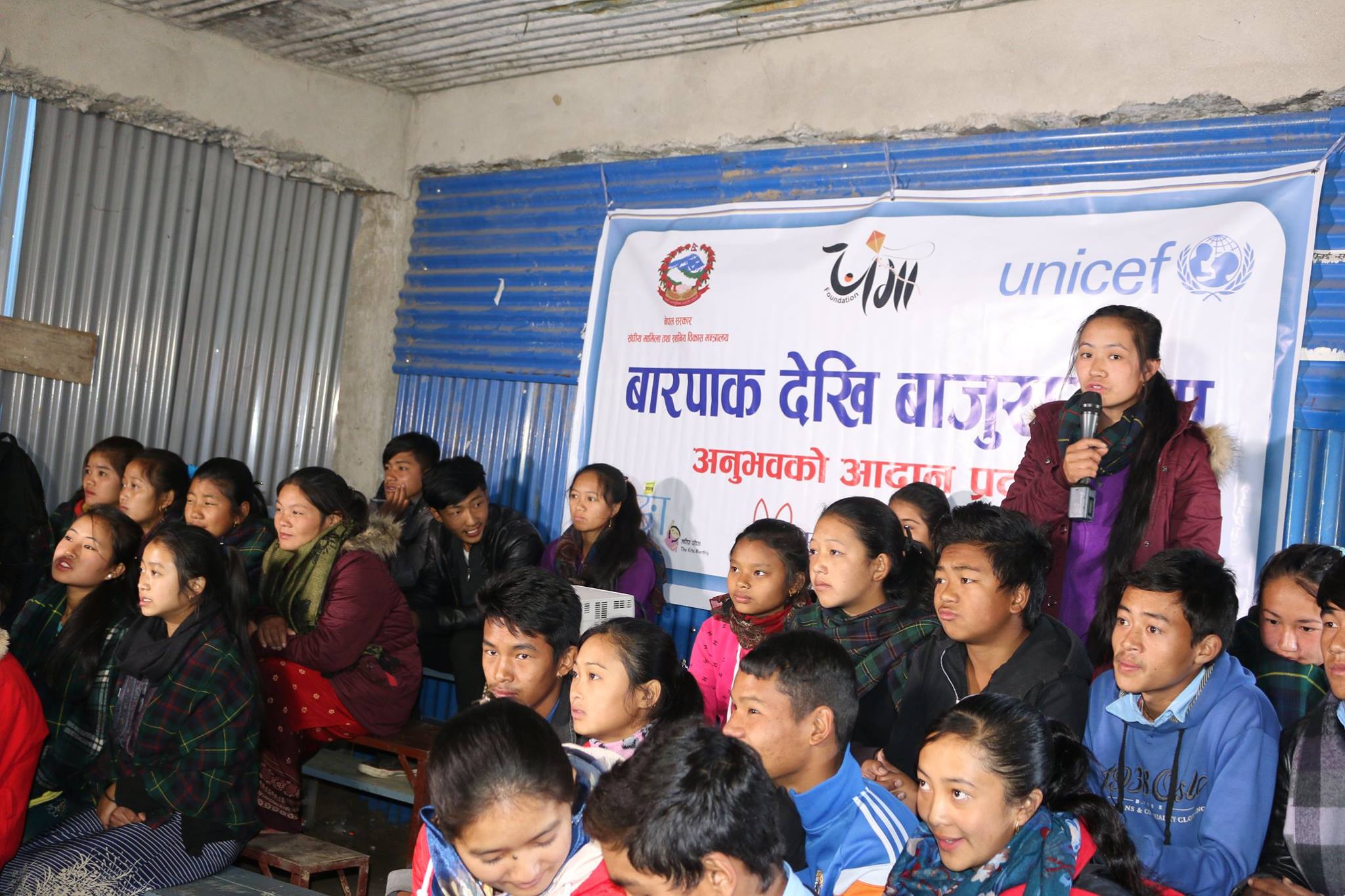Gorkha and Bajura, December 1, 2016:Â Children in Barpak, Gorkha have shared their experiences and learning from the 2015 earthquake to children in Martadi in Bajura, through an e-interaction.
Through video conferencing technology, children in Barpak gave some life-saving information to their peers in Bajura, more than 1,000 kilometres away, on how to prepare themselves for future earthquake as well as measures to follow right after disasters.
“It is good to identify safe places inside and outside houses to survive from an earthquake,” shared Jasmina Ghale from Barpak. “Do not hang heavy items above your bed or sitting area; prepare a ‘go bag’ with life-saving items such as dry food, basic medicine, torch, tarpaulin and water.”
The children from these districts were able to bridge the physical divide and exchange their experiences, and also have a bit of fun in the process. While the experiences shared by the children in Barpak, some of them in lyrical format, dealt more with what they went through during and after the earthquakes of 25 April and 12 May 2015, those in Bajura also conveyed their issues and feelings through poems and traditional Deuda song.
“Right after the earthquake, we received instant foods like noodles and biscuits as relief material,” said Bina Gurung from Barpak. “Contaminated water and junk food fueled transmission of diseases, so we should be careful about what we eat and drink after disasters.”

The e-interaction – ‘Barpak Dekhi Bajura Samma’ is the second of many experience sharing e-interactions being conducted by UNICEF to connect children from districts affected by the 2015 earthquakes with those in other parts of the country which can potentially be affected by earthquakes in the future. The first e-interaction event in October connected the children from Sunkhani, Dolakha, the epicentre of the May 12 earthquake to those in Sunwal, the first child-friendly municipality of Nepal.
Answering to a question by Prativa Kumari Jaisi from Bajura on the situation that adolescent girls faced after the earthquake, Manasari Ghale from Barpak said, “Since we were staying under the same tent along with other family members and neighbours, we faced problems while changing clothes, and managing menstrual hygiene until we settled in our own makeshift shelters.”
The exchange of information between the children from two sides, included the aftermath of the earthquake, especially regarding safety of schools and the situation of health care; about issues regarding child labor; child marriage; about their villages; about festivals, and how they brought together diverse people.

Responding to the question on chhaupadi by children in Barpak, Priyanka Timilsena in Bajura said that because of education, social taboo of chhaupadi is being gradually reduced. “Previously, we even couldn’t go to school during menstruation for five days since schools have shrines for goddess of learning. But now the situation has been changed. We don’t miss out on school,” Timilsena added.
Witnessing this innovative two-way interaction in Barpak was Dipendra Subedi, District Education Officer in Gorkha district, commended on the vibrant discussion that took place among the children from two districts, half of whom had been badly affected by the earthquake last year. “I have realized that such direct interaction among children is really effective. We should expand this type of sharing events from one school to another school and one district to another district,” he emphasized.
Present among the children in Bajura, Dharmaraj Jaisi, Deputy District Education Officer in Bajura District said that children have been able to understand the aftermath of earthquake through their peers. “Children participating here today will share these learnings to their friends in schools and family members. These will multiply of the impact of this live interaction,” he said.

Courtesy: UNICEF Nepal







